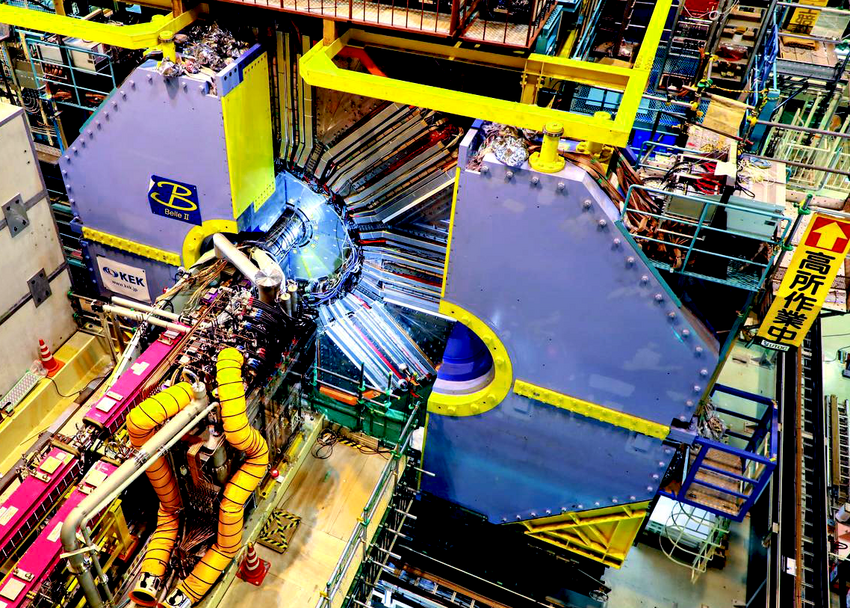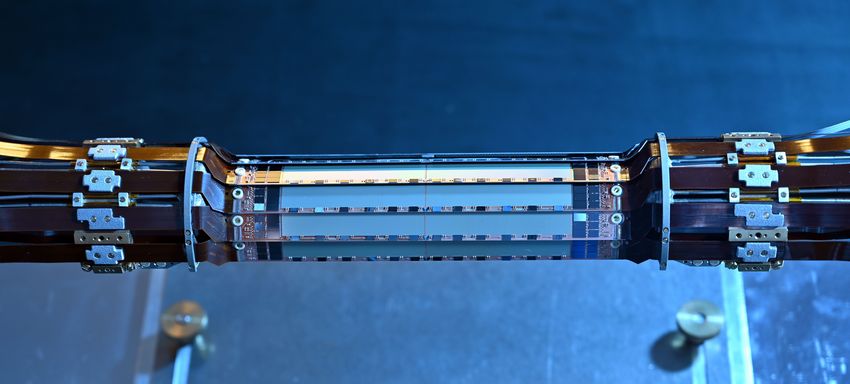The precise determination of CP violation should help solve a fundamental puzzle: the imbalance of matter and antimatter in the universe. Without this asymmetry, there would be no galaxies, no stars, no Earth, and no life. Matter and antimatter would permanently annihilate each other and release energy in the process. A permanent "survival" of matter would therefore not be possible - the universe as we know it today would never have come into being.
CP violation has been demonstrated in B mesons, each consisting of one (anti-)B quark and another (anti-)quark. B mesons are created when electrons and positrons are accelerated and made to collide.
New determination of CP violation
However, the CP violation measured by the earlier experiments BaBar in the U.S. and Belle in Japan is proving too weak to explain the disappearance of antimatter. A modernized experiment is now underway with Belle II and the SuperKEKB accelerator. The new B-Factory is expected to provide 50 times more data and allow much more precise measurements than its predecessor Belle.
The high precession is the most important parameter of the Belle II detector - and can already be compared with earlier results, as Thibaud Humair, a scientist at the Max Planck Institute for Physics, reports: "So far, the accelerator has only reached 10 per cent of the planned luminosity (the collision rate of the particles), and we have only collected about 1 per cent of the planned data. Nevertheless, we are getting the same numbers - and more importantly - an already similar measurement accuracy to Belle. This gives us confidence that with future measurements we will be able to determine the value of CP violation much more accurately."
The pixel detector - Belle II's sharp eye
The plus in B mesons and analyzable data is not the only improvement, however. The Pixel Vertex Detector (PXD) developed by German Belle II research groups allows the location where the B mesons decay to be determined precisely.
Thomas Kuhr, a scientist at Ludwig-Maximilians-Universität and spokesperson of Belle II Germany, explains why this is so important: "The B and anti-B mesons formed after they fly 0.1 millimeters on average before they decay. To detect time differences in decay over this tiny distance, we need to know the position at which the B mesons decay precisely."
The Belle II experiment has thus reached an important milestone. For the future, the researchers expect to continue increasing data volumes and even more precise analysis capabilities. "With this, we hope to come another step closer to solving the mystery of the matter-antimatter asymmetry" Thibaud Humair concludes.

